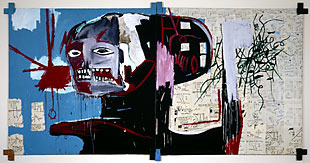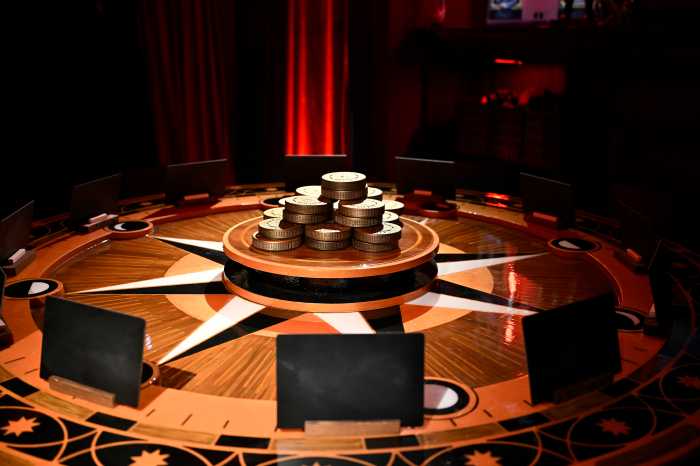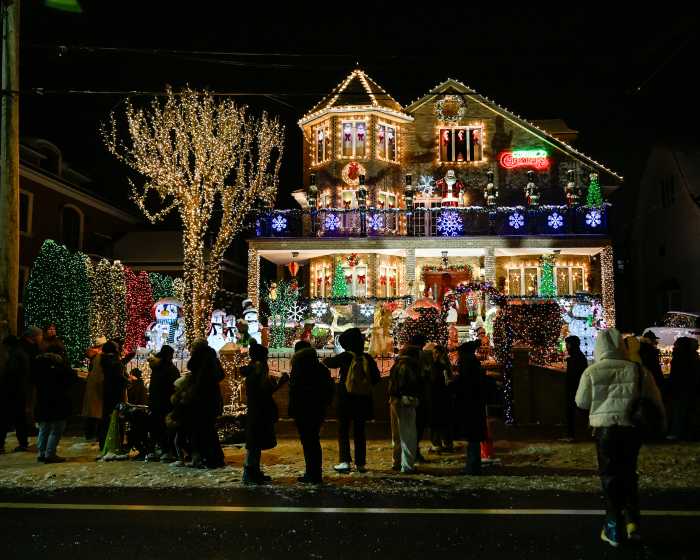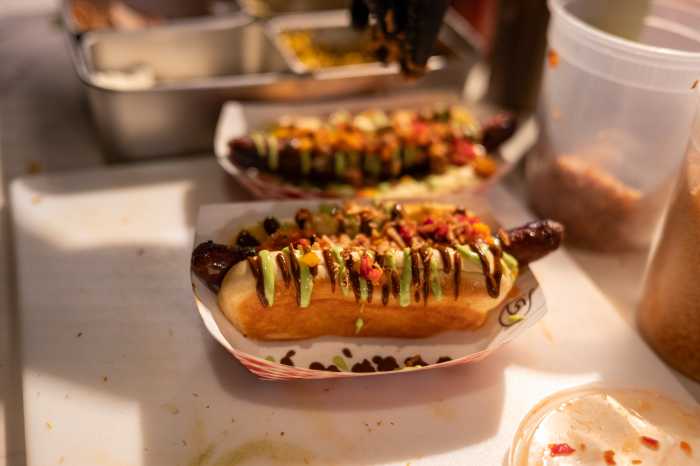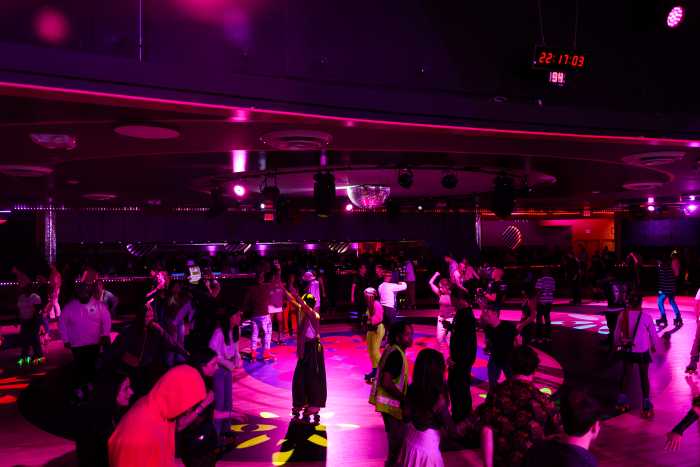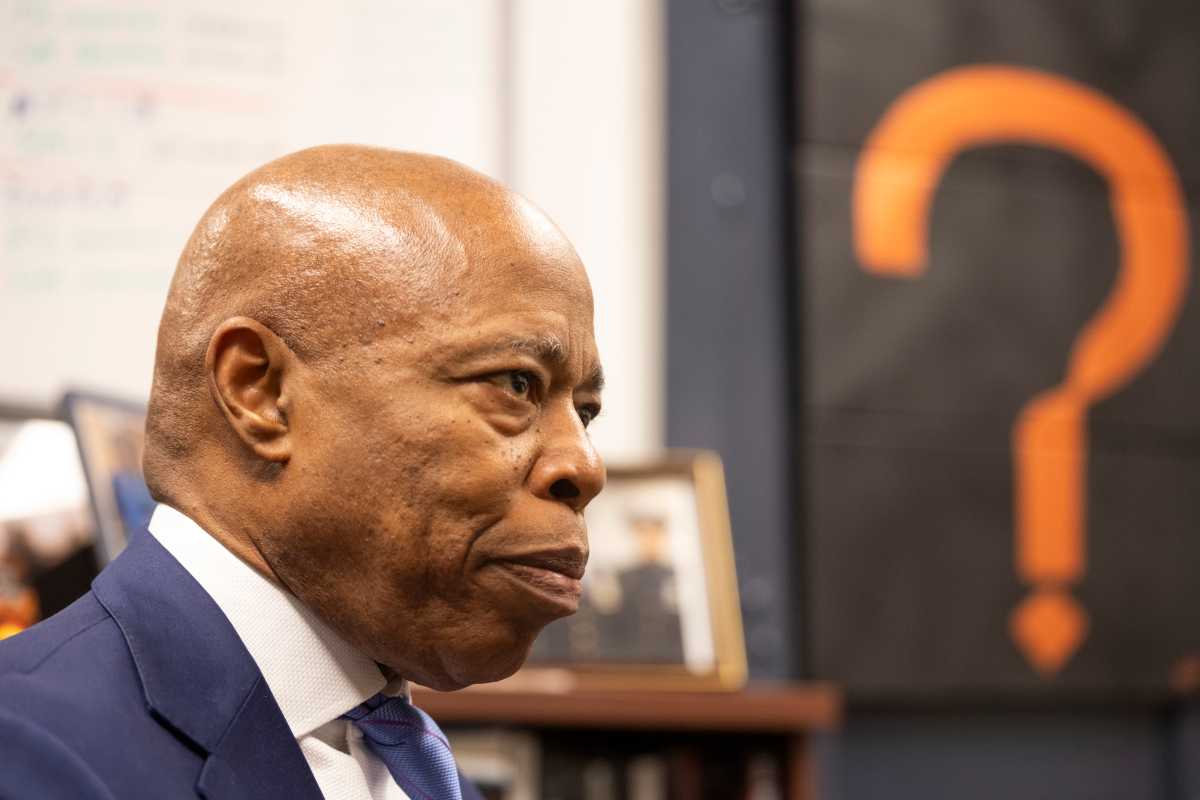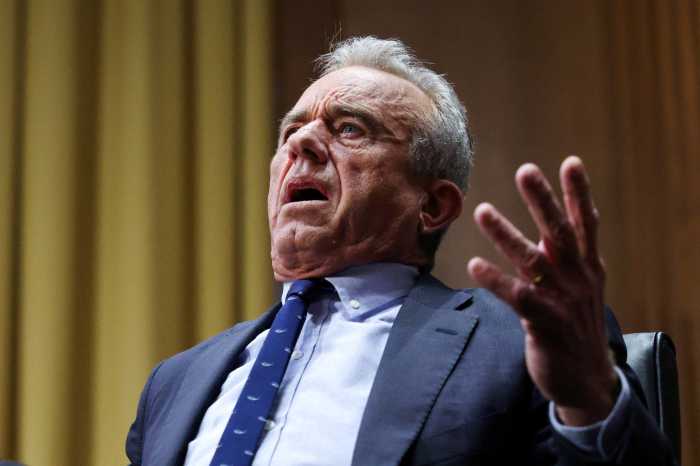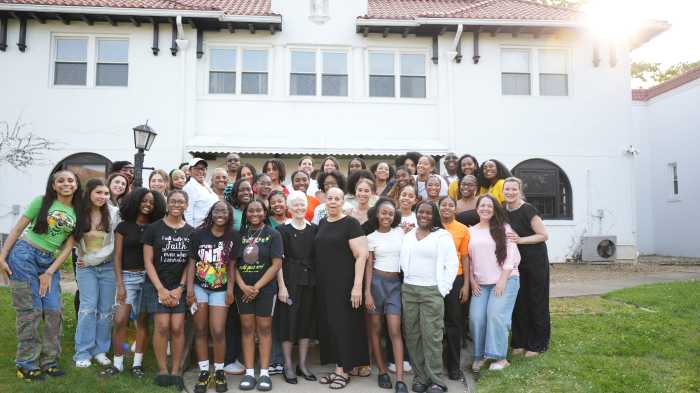With two floors of exhibition space showcasing more than 100
works by his hand, the Brooklyn Museum’s latest show is a moving
tribute to one of the borough’s most famous sons, Jean-Michel
Basquiat.
"Basquiat" is a comprehensive display of paintings
and works on paper by the poet-actor-artist who was born and
raised in Fort Greene.
At the exhibit’s opening last month, Brooklyn Museum Director
Arnold Lehman said that the works are from 37 international lenders
"and some have never been seen by the public before."
In addition to being a prolific visual artist, Basquiat, the
child of a Haitian-American father and a Puerto Rican mother,
was a multitalented creative force who starred in a film loosely
based on his own life (Edo Bertoglio’s "Downtown 81"),
was a musician in the ska-punk band Gray, performed in Blondie’s
"Rapture" video, produced his own hip-hop record "Beat-Bop,"
collaborated with Andy Warhol and dated Madonna before dying
of a drug overdose in 1988 at the age of 27.
Although he was an artist who worked for a short amount of time
before his death 17 years ago, Basquiat continues to fascinate
art historians, the public and celebrities. Not only does Haitian-American
hip-hop artist Wyclef Jean read passages from Basquiat’s interviews
and poetry on the exhibit’s audio tour, but superstars such as
Bruce Springsteen and Leonardo DiCaprio have already made pilgrimages
to the Brooklyn Museum to see the show.
The museum’s chronological exhibition is curated by Marc Mayer,
former deputy director for art at the Brooklyn Museum and now
director of the Musee d’art contemporain de Montreal; Fred Hoffman
of the Museum of Contemporary Art in Los Angeles; Kellie Jones,
assistant professor at Yale University; and Franklin Sirmans.
The curators trace Basquiat’s trajectory to stardom, starting
with the artist as a 6-year-old boy who showed a precocious talent
for drawing (so his mother enrolled him as a junior member of
the Brooklyn Museum). The next year, at St. Ann’s School in Brooklyn
Heights, "[He] drew a lot whenever he could and grinned
when he came for more paper," his second-grade teacher,
Coco McCoy, is quoted in the exhibit. The teacher notes that
his drawings then were "a thought process elaborated with
raw figures, lines, icons, symbols, edits and a message."
The exhibit recalls his early incarnation as a cryptic graffiti
poet tagging the buildings of lower Manhattan with the insignia
SAMO © (for "same old, same old," according to
the exhibition notes) to the darling of the ’80s art scene that
Basquiat became.
Basquiat’s works reflect both his diverse Brooklyn heritage and
the city itself. He incorporates symbols from American, Haitian
and Puerto Rican cultures, and combines layers of media to achieve
layers of meaning with his collages, paints and text.
In addition to paying homage to his heroes from the worlds of
music (Charlie Parker) and sports (Sugar Ray Robinson, Joe Louis),
racism is a recurring, affecting theme in his works, such as
in 1981’s "Irony of the Negro Policeman." Here the
artist scratches through a surface of white paint to get at the
colors beneath; the figure in a blue uniform, with a black skull
for a face, enforces the rules of the white world.
In 1982’s "Native Carrying Some Guns, Bibles, Amorites on
Safari," a black man holds a crate above his head, his eyes
wide with fright while the black outline of a white man in a
safari hat holds a menacing rifle. On this canvas, Basquiat writes
provocative phrases alluding to the slave trade including "Good
money in savages" and "Cortez."
Fast forward to 1983’s complicated composition for "Eyes
and Eggs," which is a plea for help for the downtrodden,
hourly paid employee. This figure, wearing a fast-food worker’s
hat and a nametag bearing "Joe," holds a frying pan
with red eggs emitting red steam. His exhausted wide eyes are
rimmed in red, and there are actual sneaker prints all over the
work.
Many of Basquiat’s canvases are effective because they illustrate
the inner world of human figures juxtaposed with the chaos of
their surroundings. In 1983’s enormous work "La Colomba"
("The Dove"), which employs acrylic, oil paintstick
and photocopy collage on a canvas with wood supports, a head
appears to melt gray paint in the face of a brilliant blue sky
and a splotch of red while the back of the figure’s head is cluttered
with thoughts in the form of words and symbols.
Although the artist initially painted on anything he could due
to financial constraints, even after he achieved success he continued
to paint on unusual materials. One example is the humble, crudely
stretched canvas upon which "St. Joe Louis Surrounded by
Snakes" (1982) was drawn. In it, the boxer rests under a
halo in the center of the composition, encircled by white faces.
The exhibition is supplemented by Lee Jaffe’s photos of Basquiat
at work. Those images help the viewer to remember the handsome
young man at work and full of life, rather than dwelling on his
too-early, tragic death. In one of Jaffe’s shots, Basquiat works
outdoors, applying paint to the canvas with a tube rather than
a brush, squishing the turquoise pigment with his fingers.
"Basquiat" is on view at the Brooklyn Museum (200
Eastern Parkway at Washington Avenue in Prospect Heights) through
June 5. Admission is $8, $4 students with valid ID and seniors,
free to members and children under age 12 accompanied by an adult.
On April 21, the Brooklyn Museum will honor JPMorgan Chase at
its annual Brooklyn Ball and attendees will have the opportunity
to view "Basquiat" during the cocktail reception, which
is followed by dinner and dancing in the Beaux-Arts Court. Tickets
are $350-$1,500. For more information about the Brooklyn Ball,
call (718) 501-6423 or e-mail special.events@brooklynmuseum.org.
For more information about the exhibit, call (718) 638-5000 or
visit the Web site at www.brooklynmuseum.org.
The catalog, "Basquiat" (Merrell Publishers Ltd/Brooklyn
Museum), edited by Marc Mayer, is on sale in the museum gift
shop.


